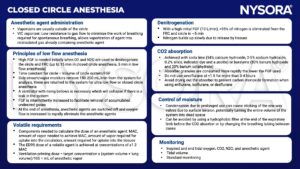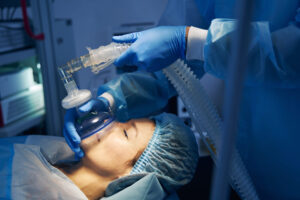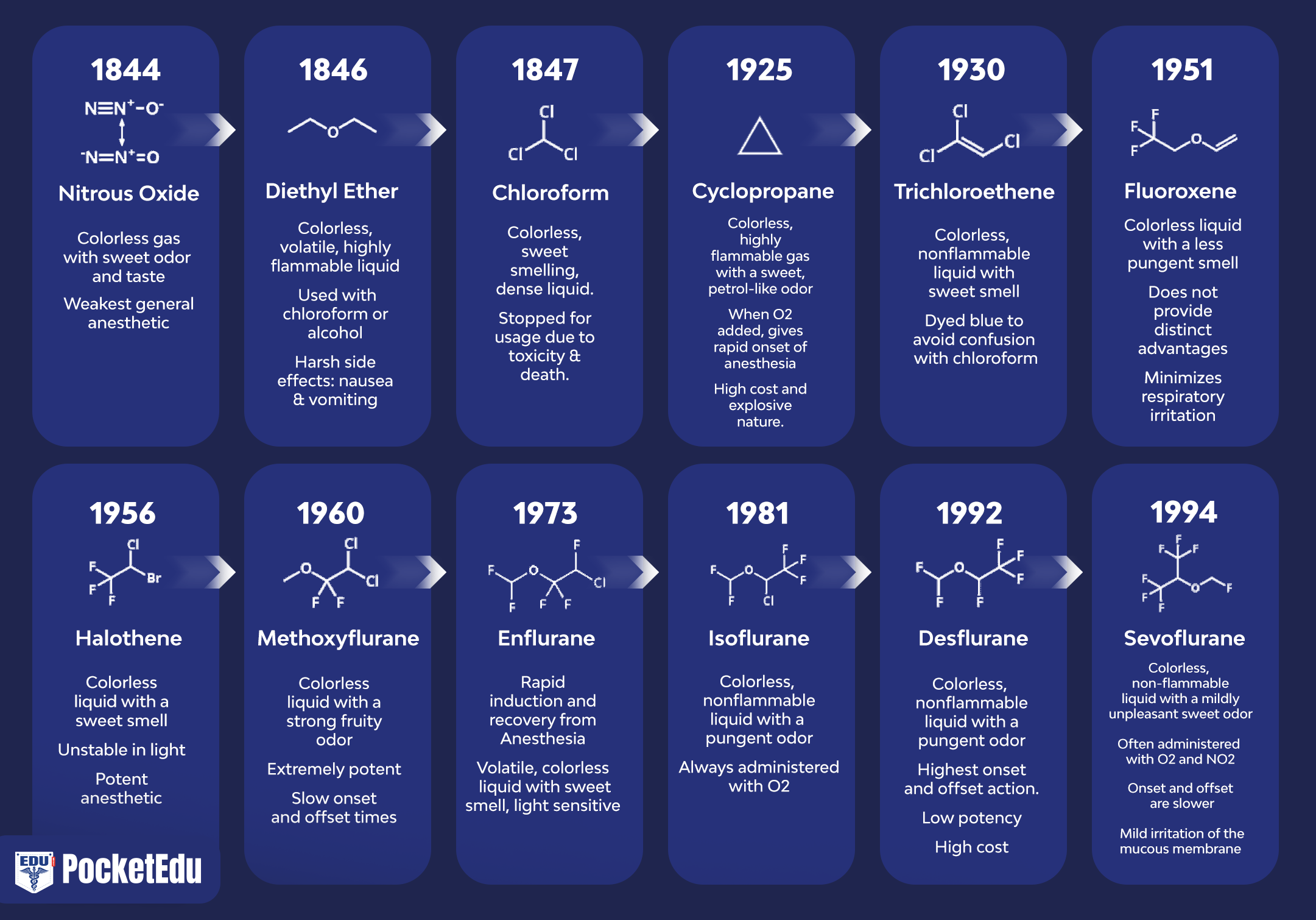Learning objectives
- Describe the purpose and composition of closed circle anesthesia
- Describe the technique and safety precautions of closed circle anesthesia
- Describe the advantages and disadvantages of closed circle anesthesia
Background
- The current inhalational anesthetic agents with low blood solubility sparked renewed interest in closed circle anesthesia, due to their cost and environmental concerns
- The circle system’s components are arranged in a circular manner
- The system allows rebreathing of anesthetic agents while avoiding rebreathing of CO2
- This allows the use of low or minimal fresh gas flow
System composition
- The circle system consists of:
- Fresh gas flow (FGF)
- Inspiratory and expiratory unidirectional valves
- Inspiratory and expiratory tubing
- Y-piece connector
- APL valve
- Reservoir bag
- CO2 absorber
- The most efficient arrangement:
- FGF enters the system before the inspiratory unidirectional valve
- The APL valve and reservoir are situated between the expiratory valve and the CO2 absorber
- The CO2 absorber is situated before the FGF entry point
Definitions
- Closed circle anesthesia:
- FGF is just sufficient to replace the volume of gas and vapor absorbed by the patient (Basal oxygen requirements, volatile agent uptake, and nitrous oxide uptake if used)
- No gas leaves through the APL valve
- Exhaled gases are rebreathed after CO2 absorption
- Low flow anesthesia
- FGF < alveolar ventilation (usually < 1.5 L/min)
- Excess gases are eliminated via the APL valve
- Ultra-low flow anesthesia
- FGF < 0.5 L/min
- Excess gases are eliminated via the APL valve
Technique

Safety
- Monitor inspired oxygen, end-tidal carbon dioxide, and inhalational agent
- Prevent unidirectional valves from sticking due to water vapor condensation
- Resistance to breathing is increased during spontaneous ventilation due to the unidirectional valves
- Prevent compound A formation: Newer designs of soda lime claim less or no production of compound A, baralyme is worse than soda lime, and Amsorb© is the safest
- Methane, acetone, ethanol, and hydrogen can accumulate but generally do not become clinically significant
- Uneven filling of the canister with soda lime leads to channeling of gases and reduced efficiency
- There is an increased potential for leads and disconnection due to the many connections
Advantages & disadvantages
| Advantages | disadvantages |
|---|---|
| Economy of gases and inhalational agents | Poorer regions may not have the necessary resources |
| Humidification of the inspired gases | Accumulation of unwanted gases (less of a problem with modern systems) |
| Reduced atmospheric pollution |
Suggested reading
- Pollard BJ, Kitchen, G. Handbook of Clinical Anaesthesia. Fourth Edition. CRC Press. 2018. 978-1-4987-6289-2.
- Herbert L, Magee P. Circle systems and low-flow anaesthesia. BJA Education. 2017;17(9):301-5.
We would love to hear from you. If you should detect any errors, email us [email protected]








